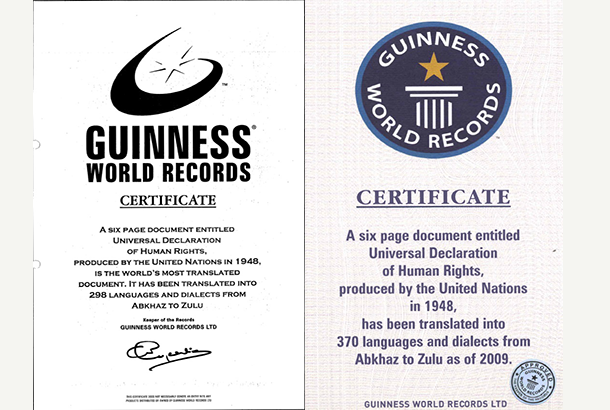New record: Translations of Universal Declaration of Human Rights pass 500
GENEVA (2 November 2016): The Universal Declaration of Human Rights, already the world’s most translated document, is now available in more than 500 translations with the addition of North Bolivian Quechua to the collection.
“The growing number of translations underscores the universality of the Universal Declaration of Human Rights and the power of its words to resonate strongly across all cultures and languages,” said UN High Commissioner for Human Rights Zeid Ra’ad Al Hussein.
The celebrated six-page text, adopted by the UN General Assembly on 10 December 1948, is a milestone document, setting out, for the first time, the fundamental human rights to be universally protected.
The first of its 30 Articles begins: “All human beings are born free and equal in dignity and rights”, while Article 2 states: “Everyone is entitled to all the rights and freedoms set forth in this Declaration, without distinction of any kind, such as race, colour, sex, language, religion, political or other opinion, national or social origin, property, birth or other status.”
Guinness World Records declared the UDHR the most translated document in November 1999 when the total stood at 298 languages, and updated the certification in 2009 when the number reached 370. Since then, the flow of translations by government offices, civil society organizations and committed individuals has continued. Today the text is available in languages and dialects from around the world, from Abkhaz to Zulu. It has also been translated into British and Spanish sign language.
Translation number 501 is into a dialect of the indigenous Quechua language spoken in the north-western Bolivian department of La Paz by some 116,000 people.
The goal of the UN Human Rights Office is to share the UDHR with the entire world, and anyone is welcome to submit a new translation that is not in the collection for consideration. Learn how
